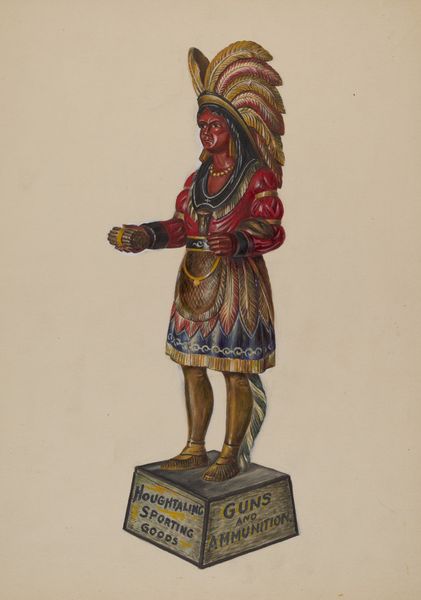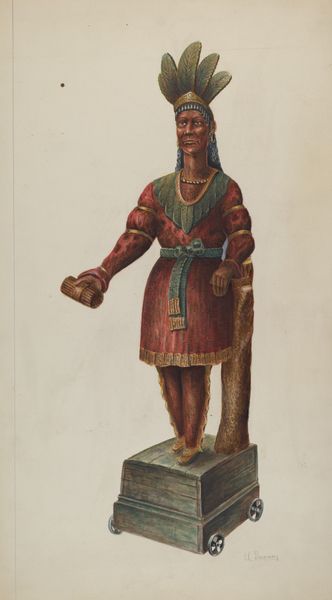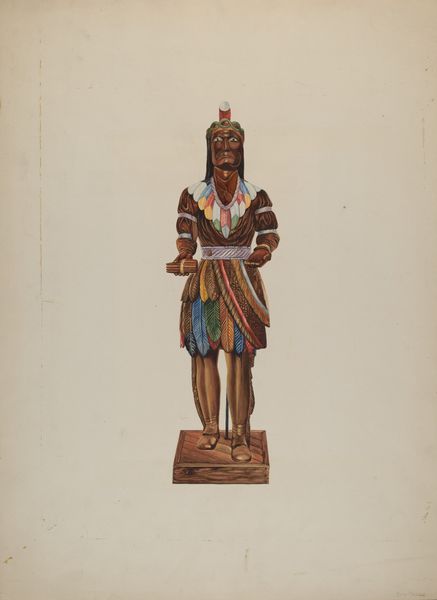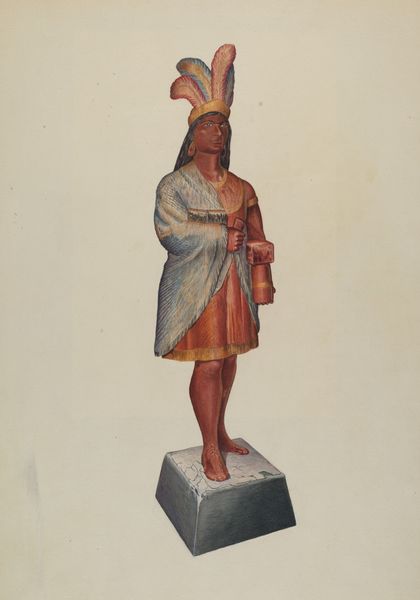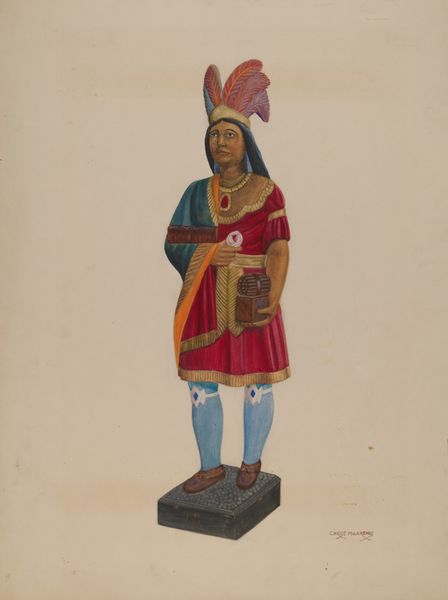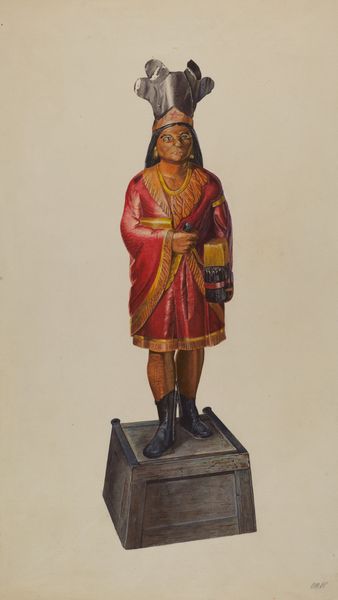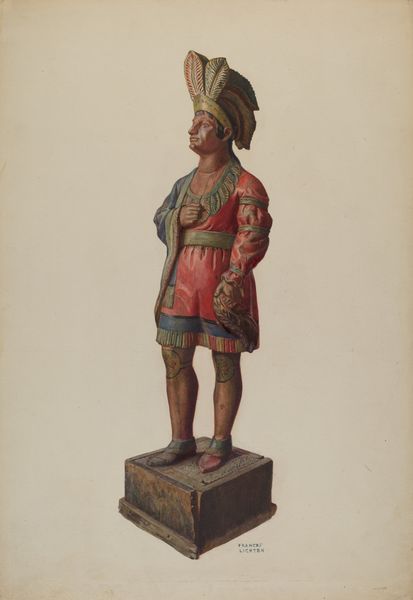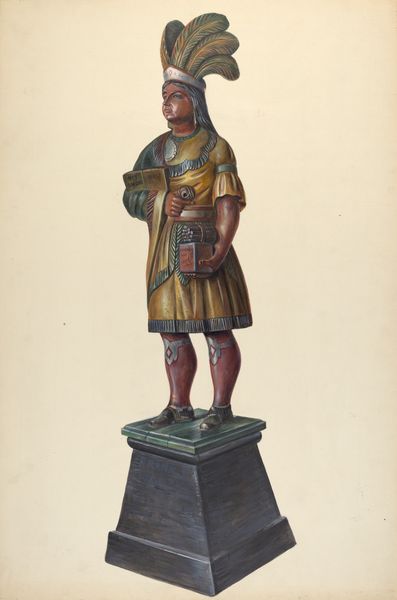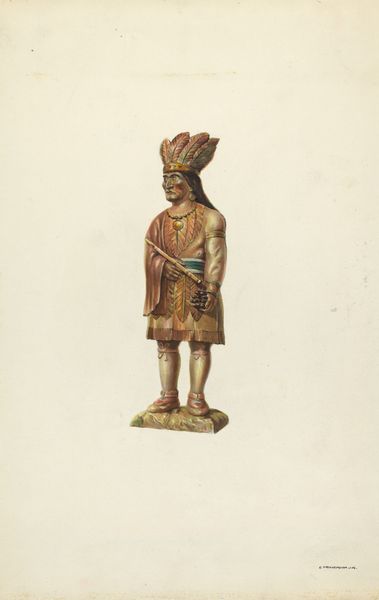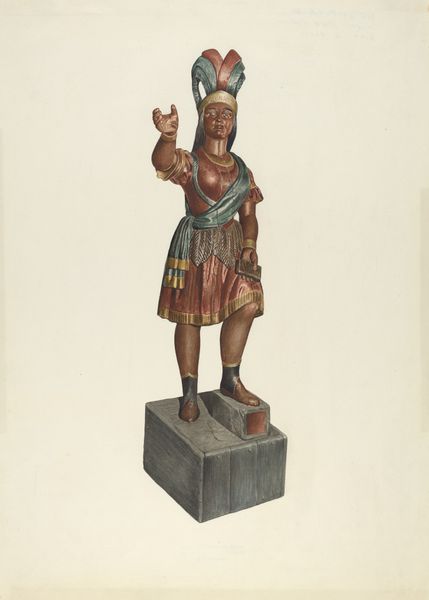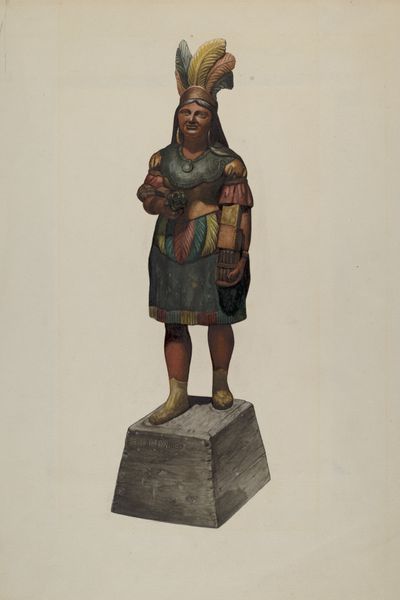
drawing
#
drawing
#
portrait reference
Dimensions: overall: 41.5 x 31 cm (16 5/16 x 12 3/16 in.)
Copyright: National Gallery of Art: CC0 1.0
Curator: Right now, we’re looking at a drawing titled “Cigar Store Indian” from around 1937. The artist, Helen E. Gilman, captured a painted wood sculpture with delicate washes of color. What are your first thoughts? Editor: Well, instantly I see the kind of cultural tightrope this object walks. There's a real sadness about it, actually, knowing its origin as advertisement born from stereotype. But rendered in watercolor pencil here, there is something more delicate, less bold and boastful, which asks a certain type of quiet reconsideration. Curator: Exactly. The Cigar Store Indian image as such is complicated; a figure born of colonial commercialism and appropriation. Its symbolic power evolved in unexpected ways through history. Think about how these figures stood sentinel outside shops, promising the "exotic" tobacco within, linking Native imagery to global trade and colonization. It has echoes of that era’s grand power structures but reduced down to folk-art rendition. Editor: Right, but it's a symbol, also, of the romanticized idea of the “noble savage”, this image that the public has clung to. Note that in the figure's posture, the serene face, the way the clothing melds into a soft palette—these are elements from which spring the romanticism the culture associates with First Nations’ Peoples, a connection to the land that industrialism has not taken. Does it remind us of the way the dominant culture has a very selective embrace of what we want to see about Native communities? Curator: And Gilman, in her rendering, provides another layer, don’t you think? Choosing to represent it in this medium, we have a gentler, more nuanced take. We see this carved figure representing an imagined person filtered through at least three visions: that of the original carver, the popular vision of First Nations individuals at the time, and then Helen Gilman. How powerful it is, all the refractions in time and memory. Editor: It really speaks to how symbols don't stay still; they're living things, twisting, shedding skins. This figure, frozen in wood and immortalized in drawing, becomes a multi-layered artifact – a ghost of a commercial venture, a vessel for longing, and an echo of lost narratives, reconsidered by an individual artist like Gilman who gives the quiet power back to an icon caught in shifting winds. Curator: A somber, complex icon rendered in soft color: I'll leave this image in the front of my thoughts as I continue the tour. Thanks.
Comments
No comments
Be the first to comment and join the conversation on the ultimate creative platform.
